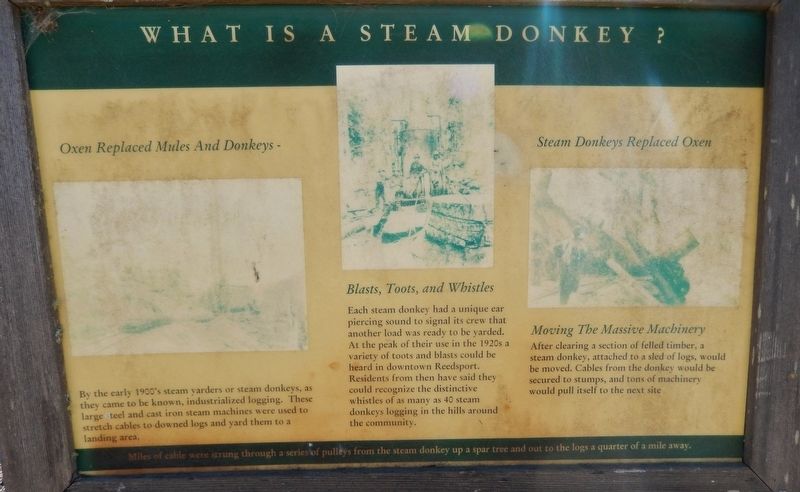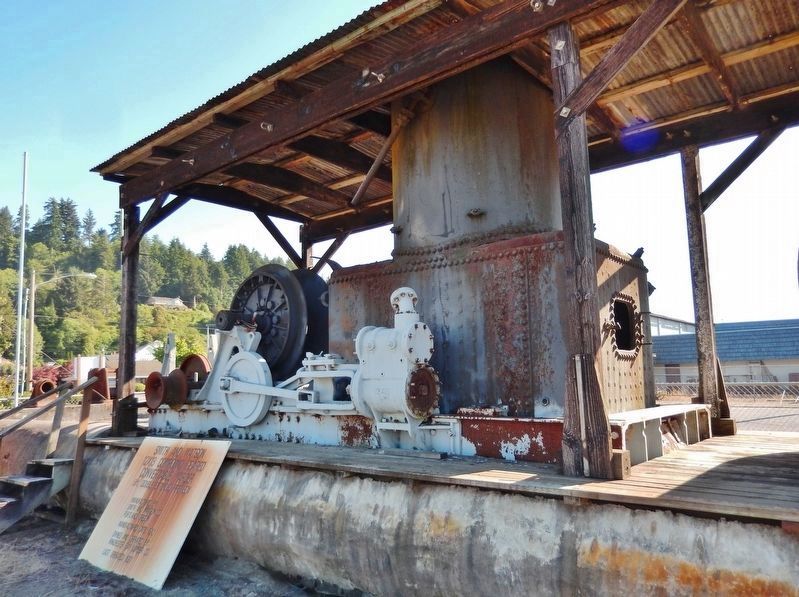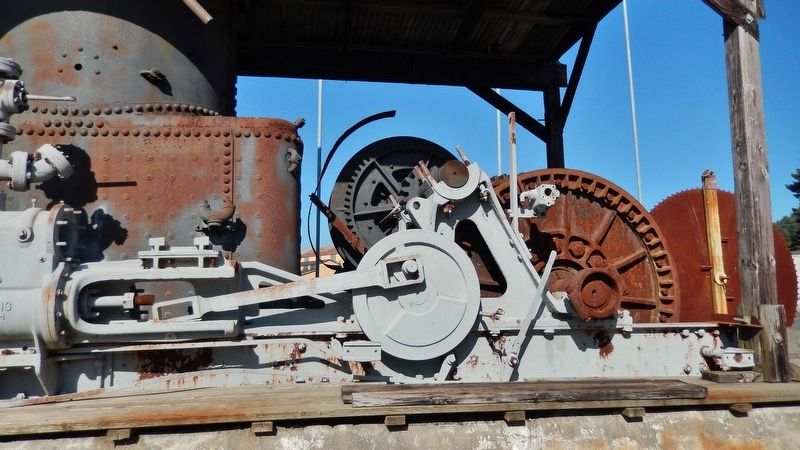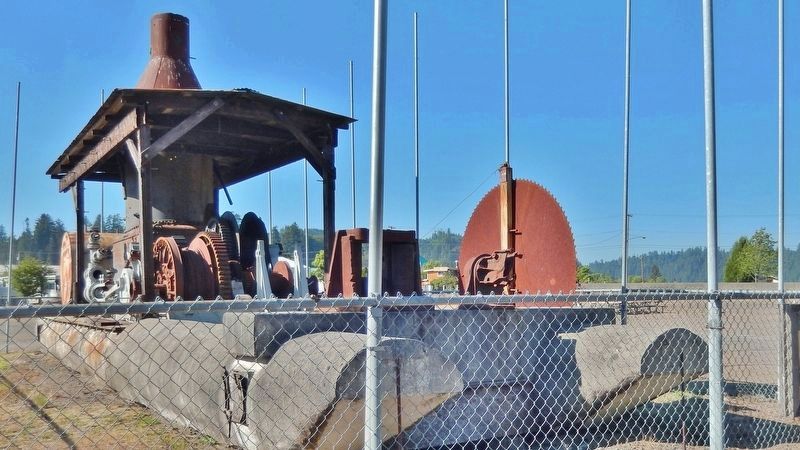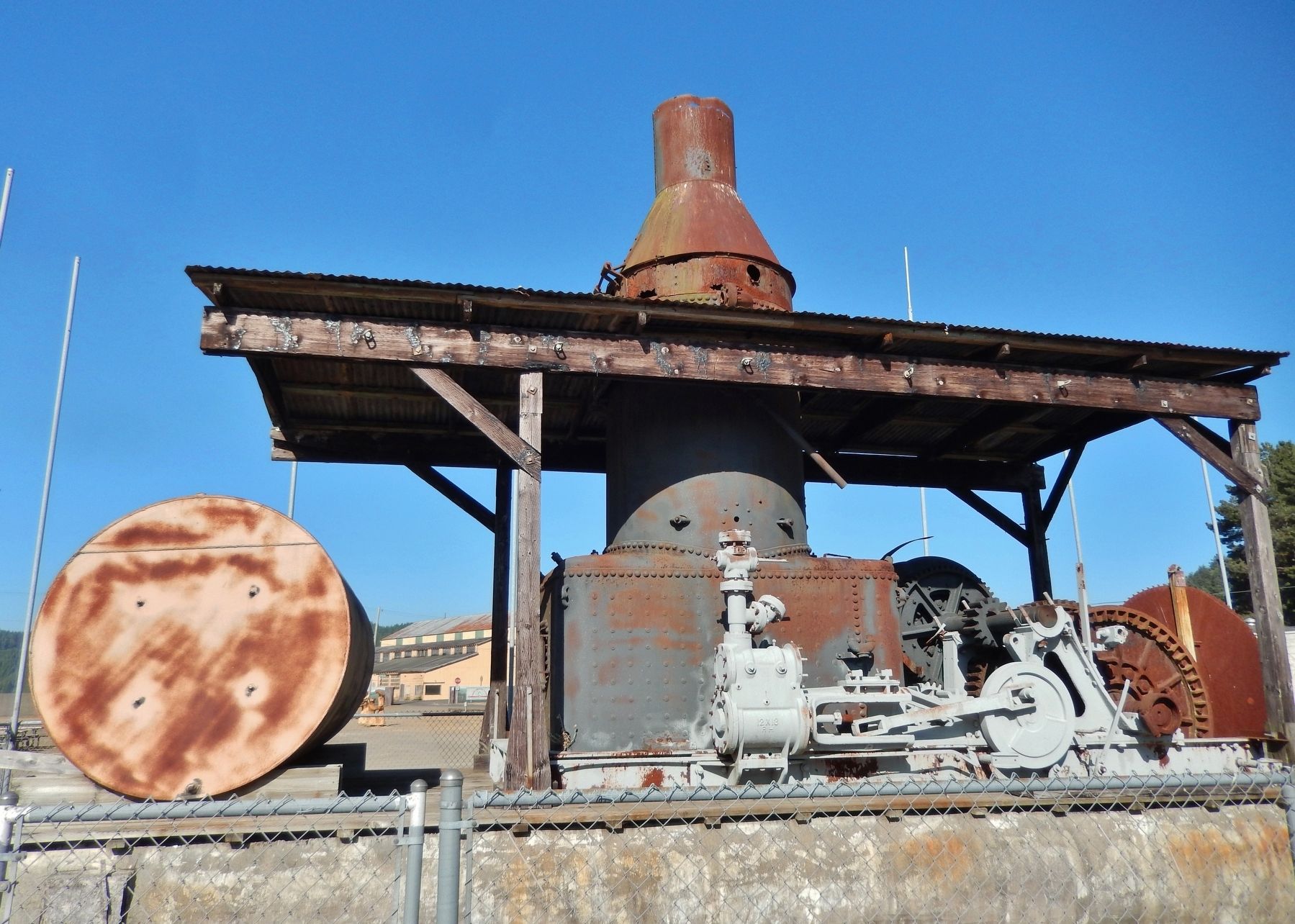Reedsport in Douglas County, Oregon — The American West (Northwest)
What is a Steam Donkey?
Oxen Replaced Mules And Donkeys –
Steam Donkeys Replaced Oxen
By the early 1900’s steam yarders or steam donkeys, as they came to be known, industrialized logging. These large steel and cast iron steam machines were used to stretch cables to downed logs and yard them to a landing area.
Blasts, Toots, and Whistles
Each steam donkey had a unique ear piercing sound to signal its crew that another load was ready to be yarded. At the peak of their use in the 1920s a variety of toots and blasts could be heard in downtown Reedsport. Residents from then have said they could recognize the distinctive whistles of as many as 40 steam donkeys logging in the hills around the community.
Moving The Massive Machinery
After clearing a section of felled timber, a steam donkey, attached to a sled of logs, would be moved. Cables from the donkey would be secured to stumps, and tons of machinery would pull itself to the next site.
Miles of cable were strung through a series of pulleys from the steam donkey up a spar tree and out to the logs a quarter of a mile away.
Topics. This historical marker is listed in these topic lists: Horticulture & Forestry • Industry & Commerce.
Location. 43° 42.2′ N, 124° 5.74′ W. Marker is in Reedsport, Oregon, in Douglas County. Marker is at the intersection of Walter Avenue and North 3rd Street, on the left when traveling east on Walter Avenue. Marker and subject Steam Donkey exhibit are located at the northeast corner of North 3rd Street & Water Avenue. Touch for map. Marker is in this post office area: Reedsport OR 97467, United States of America. Touch for directions.
Other nearby markers. At least 7 other markers are within 9 miles of this marker, measured as the crow flies. History of Local Steam Donkey (here, next to this marker); Jedediah Smith (approx. 0.7 miles away); Smith, Jackson & Sublette Umpqua Memorial (approx. one mile away); Gardiner (approx. 1.9 miles away); U.S.C.G. Station, Umpqua River, 1939 (approx. 5.8 miles away); Umpqua River Lighthouse (approx. 5.9 miles away); Brandy Bar (approx. 8.3 miles away).
More about this marker. Marker is mounted on the east side of the chain link fence surrounding the Steam Donkey exhibit. The illustrations on this marker are weathered and severely faded.
Also see . . .
1. Reedsport restores historic steam donkey once used for logging.
A 1915 Smith & Watson steam donkey was used for logging in the Reedsport and Winchester Bay area until 1937. It was left in a creek at the bottom of a ravine until 1994, when a team of retired loggers hauled it out to be displayed in town. Owned by the Winchester Bay Logging Co. of Reedsport, the steam donkey, known as Machine No. 36, was used to pull logs to
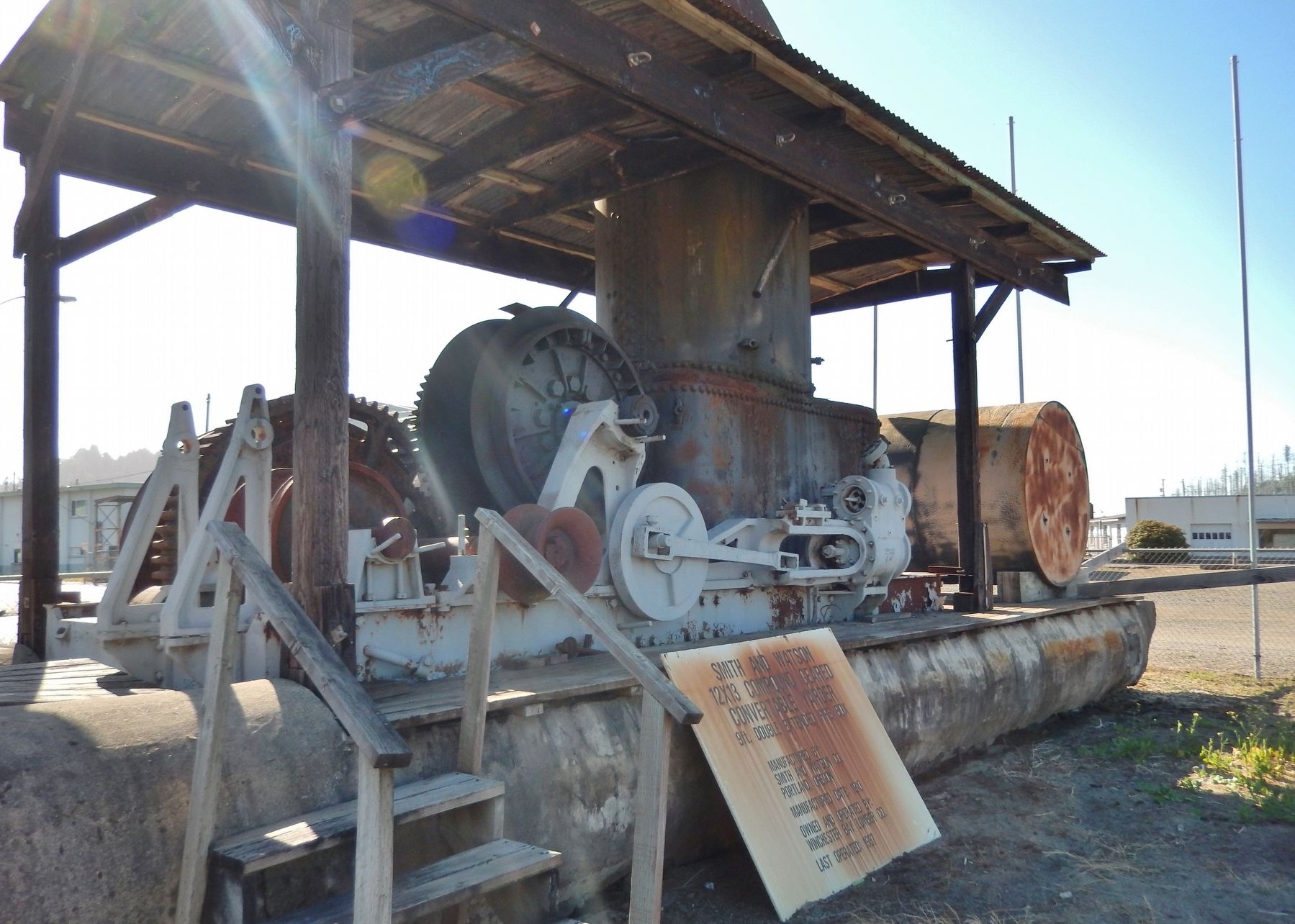
Photographed By Cosmos Mariner, July 2, 2015
2. Steam Donkey (view from marker)
12x13 Compound Geared
Convertible Yarder
9ft. Double Extended Fire Box
Manufactured by:
Smith and Watson Co.
Portland, Oregon
Manufactured Date: 1910
Owned and operated by:
Winchester Bay Lumber Co.
Last Operated: 1937
2. Logging Crew with Oxen & Steam Donkey - c. 1900.
This turn-of-the-last-century view shows a logging crew using both ox teams and a steam donkey to move their logs. It appears the oxen brought the logs down the slope, and then the steam donkey pulled them along a more level skid road to this staging area. Oxen, of course, have been used in the woods for centuries, steam donkeys, on the other hand, were introduced in about 1890. By World War I steam donkeys had replaced almost all ox teams, though they themselves were eventually replaced by gasoline-powered equipment (Submitted on January 29, 2018, by Cosmos Mariner of Cape Canaveral, Florida.)
Credits. This page was last revised on December 28, 2022. It was originally submitted on January 29, 2018, by Cosmos Mariner of Cape Canaveral, Florida. This page has been viewed 410 times since then and 35 times this year. Photos: 1, 2, 3, 4, 5, 6. submitted on January 29, 2018, by Cosmos Mariner of Cape Canaveral, Florida. • Andrew Ruppenstein was the editor who published this page.
